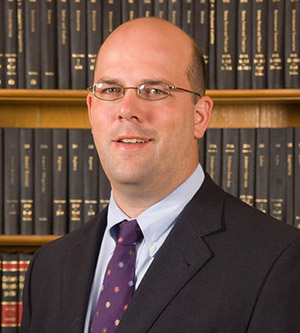Study: Parole Violations Are Leading Cause of Prison’s Revolving Door
.jpg) |
|
The United States prison population has increased by more than 700 percent since 1970.
|
ALBANY, N.Y. (Oct. 18, 2017) – Is the enormous rise in our country’s prison population a self-perpetrating process?
In a new study, published in the Proceedings of the National Academy of Sciences Journal, a group of researchers, including Shawn Bushway of the University at Albany, found that convicted felons who served prison time are much more likely to end up behind bars again than those who were sentenced to probation for similar crimes.
The finding suggests there is a casual relationship between sentencing and the likelihood of future incarceration.
“Normally, when we talk about prison sentences, researchers and policymakers consider the impact of the initial incarceration from admission until first release,” said Bushway, a professor of public administration and policy at the University’s Rockefeller College of Public Affairs and Policy. “Our study shows that this approach undercounts the actual time people spend in prison because it misses time served due to parole violations.”
The study analyzed more than 100,000 felons between 2003 and 2006 who were sentenced for violent and non-violent crimes. Using statistical methodology, the researchers determined the extent of which being sentenced to prison rather than probation increased chances of a future return behind bars.
 |
|
Shawn Bushway, professor of public administration and policy. (Photo by Mark Schmidt) |
Failing drug tests, associating with felons, breaking curfew and other technical parole violations were among the main reasons for a convict’s return to prison. While these violations are not felony crimes, breaches of parole can result in a return to prison.
In contrast, those sentenced to probation do not receive the same level of supervision or scrutiny.
Both prisoners and those sentenced to probation commit about the same levels of crime following the completion of their sentence, according to the study.
“Parole supervision is much different than standard probation supervision, which rarely leads to incarceration for people who violate their terms,” Bushway said. “The use of incarceration as a supervisory tool is a result of policy decision, rather than the actions of individuals under the supervision of the system.”
The United States prison population saw a 700 percent increase between 1970 and 2005 – with the total cost of incarceration exceeding $1 trillion.
Bushway, along with his co-authors, suggest that alternatives to prison sentences for parole violators, such as drug treatment programs or community service options, may help to slow down prison’s revolving door. They also suggest sentencing fewer people to jail time and more to probation.
“Our study showed that the policy of reincarceration does not appear to lead to any substantial gains in crime prevention,” Bushway said.
Other co-authors on this study included David Harding of UC Berkeley and Jeffrey Morenoff and Anh Nguyen of the University of Michigan.
You can learn more about Bushway’s research and expertise here.
![]() For more news, subscribe to UAlbany's RSS headline feeds
For more news, subscribe to UAlbany's RSS headline feeds
A comprehensive public research university, the University at Albany-SUNY offers more than 120 undergraduate majors and minors and 125 master's, doctoral and graduate certificate programs. UAlbany is a leader among all New York State colleges and universities in such diverse fields as atmospheric and environmental sciences, business, education, public health,health sciences, criminal justice, emergency preparedness, engineering and applied sciences, informatics, public administration, social welfare and sociology, taught by an extensive roster of faculty experts. It also offers expanded academic and research opportunities for students through an affiliation with Albany Law School. With a curriculum enhanced by 600 study-abroad opportunities, UAlbany launches great careers.


